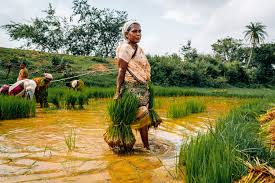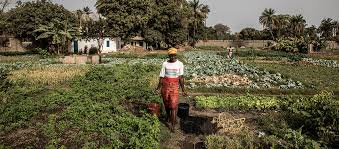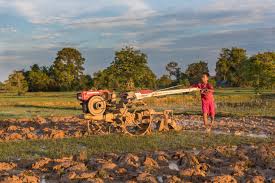In this article the focus is on rural sociology. This article discusses the application of sociology to agricultural and rural problems.
As agriculture is predominantly a rural occupation, this article also treats the discussion of rural sociology with emphasis on agricultural subjects.
Read Also: 12 Medicinal Health Benefits Of Renealmia alpinia (Pink cone ginger)
Definitions of Key Sociological Concepts Relevant to Agriculture

Many students of rural sociology at the introductory level in many universities in Nigeria have not had any previous significant learning experience in the study of sociology; hence it is necessary to explain the basic concepts or terms often used in the field of sociology.
These concepts are not the final subject matter of rural sociology but are intellectual tools for analyzing social situations in rural society.
1. Sociology is the scientific study of society.
2. Society is a group of people who have lived together, sharing common values and general interests, long enough to be considered by others and by themselves as a unit. Rural sociology studies such societies when they exist in rural areas.
3. Rural sociology is the systematic study of rural life. It is the systematic body of knowledge which has resulted from the application of the scientific method to the study of the rural society, its organization, structure, social processes, basic social systems, institutions, and dynamics.
4. Agricultural sociology is the application of sociology to the agricultural profession. It is the scientific study of the social lives of the people who are engaged in the agricultural occupation. As the majority of those who are engaged in agriculture live and work in rural areas, agricultural sociology focuses largely on the use of rural sociological concepts.
5. Structure is the systematic arrangement characteristic of a society, the smallest parts arranged to form a large discernible unit. A society’s structure is composed of such parts as groups, institutions (e.g. government and schools), neighbourhoods and communities, organizations, and collectives.
6. Function is an aspect of the relationship between components mentioned above. It may involve the services provided by one component to another within the total structure.
The function of the village school is to provide sound educational facilities to village children so that they acquire the skills, knowledge, and attitudes necessary to be citizens and members of society.
The concept of function may also apply, in a mathematical sense, to relations among variables where changes in one are governed by changes in the other. For example, the density of population in a given geographical area will be governed by the size of the population. Increase in density will be a function of increase in the size of the population.
7. Change means that some aspect of function or structure differs at later times from what it was at earlier times. Change involves the processes of disorganisation, organisation, or reorganisations. When one component changes, it may no longer fit with other parts, and changes or modification of other parts and reorganisation of the whole structure may result.
8. Groups are defined as two or more people in reciprocal interaction with one another.
9. Institutions are “crystallised mechanisms” clearly defined ways in which society meets its needs—that have existed long enough to become embedded in the social structure. Examples of social institutions are government bodies, school systems, village councils, and religious systems.
10. Organizations are groups with special concerns and interests that have developed a structure involving specific roles for various members, and have a more or less formal set of rules and regulations for operation. An example is the village development organisation.
11. Communities and neighbourhoods are groups of people living within a contiguous geographic area, sharing common values and a feeling of belonging to the group, who come together in the common concerns of daily life.
A society may include many communities and even more neighbourhoods (a smaller entity than the community, characterized by much more frequent face-to-face contacts). A community can be a village or college campus. Hamlets are examples of neighbourhoods.
12. Culture is the total way of life of people their pattern of thoughts and behaviour and constitutes the man-made environment as opposed to the natural environment. Within this wide area called culture fit sub-concepts such as culture traits, the smallest component and unit of analysis.
Cultural traits are the units which make up a culture. Examples of cultural traits in contemporary Nigerian society are hoes, cutlasses, village residence and scattered settlements, various food items culture complex, the organization of culture traits around one dominant trait; culture area, the geographic area within which a common culture exists; and culture lag, the time difference between some technological change and the resulting change in culture.
13. Social norms are techniques, folkways, mores, and laws which are rules based on social values that control and direct interpersonal relationships in society. Techniques are ways of doing things in which technical efficiency is the criterion of operation.
Folkways are the socially acceptable ways of behaviour, the customary norms of society that do not imply moral sanction, e.g. good manners. Mores are the socially acceptable ways of behaviour that do involve moral standards; violation may result in severe social action such as ostracism.
Laws are formalised norms with legal and/or political enforcement, such as acts and statutes of a nation or political state.
14. Social role is the expected behaviour of one member of society in relation to others. A single person in society may play a number of roles such as father, teacher, citizen, or rural sociologist. Some roles are temporary; others are more permanent; and some may conflict with others.
15. Social stratification is the division of society into a series of levels indicating positions of individuals and groups in the value system existing in that society. Position in the social stratification levels denotes status of the group or individual. Individual and group behaviour in society is deeply influenced by stratification and status.
16. Social processes are the interactions of groups and individuals with one another, and these may take four basic forms: a) competition, where the object is to outdo another in achievement of a goal; b) conflict, where the object and goal is to eliminate the other; c) cooperation, where persons or groups unite efforts to achieve a common goal; and d) accommodation, where a temporary or permanent termination of rival efforts occurs and rival parties are able to function together.
17. Leadership and patterns of influence are the networks of influence that weave through society, urban or rural, and radiate from individuals and groups influential in decision making.
These individuals and groups who serve from time to time in positions of leadership may often be difficult to identify, yet they are vital in decision making. Understanding of the patterns of influence, leadership, and power is invaluable in the analysis of the social situation.
18. Religion is a system of belief in the supernatural power which distinguishes between right and wrong, and which provides answers to some of life’s ultimate problems.
19. Rural persons are those who live in the country or in towns of less than 2,500 population in the United States of America or less than 3,000 population in Nigeria.
20. Urban people are those who live in towns with population of 2,500 and over in the United States of America, or 3,000 and over in Nigeria.
21. Primary groups are small in size with face-to-face relationships of members and are informal in nature.
30. Secondary groups are large in size, formal in nature and characterized by impersonal relationships among the members.
Read Also : How to Plant Fruit Trees for Optimum Performance
The Historical Development of Rural Sociology as an Agricultural Discipline

Rural sociology is the scientific study of the social behaviour of rural people. Rural sociology was established as a sub-discipline towards the beginning of the twentieth century, primarily in the United States of America. Early beginnings of rural sociology date to at least 1908, when United States President T. Roosevelt appointed the County Life Commission.
The President was influenced in the decision to set up the commission by Sir Horace Plunkett, who had observed the deterioration of rural life in Ireland and feared that if nothing were done about it, the United States might face the same situation.
After the Second World War, rural sociology became established in European academic and research institutions. In most African countries, rural sociology was introduced as an invention of western civilization during the colonial era, particularly in the British territories.
It was not until the early 1960s that sociology was established as a component of higher education programmes in Africa. There are indications, however, that rural sociological research was conducted in many African countries as historical or anthropological studies long before sociology was established formally as a discipline in its own right.
Prior to 1960, when Nigeria became independent of British rule, no attempt was made to teach rural sociology as a discipline in the only Nigerian university, the University of Ibadan, which was established in 1948.
Although a Department of Agricultural Economics was established, rural sociology has been taught as a subject in the department since 1966. In 1968, when a Department of Agricultural Extension Services was created in that university, the teaching of rural sociology was transferred to the department.
The history of rural sociology during the last half-century is impressive. From small beginnings and a few pioneers, it has developed in status, academic importance, and practical utility to a full-fledged discipline which yields understanding of rural communities, groups, cultures, institutions, and other forms of human association.
Through scientific analytical study, it offers some solutions to social problems not only in the United States but far beyond its borders to countries all over the world, particularly those in the process of developing their rural areas. The rural sociologist can now look to the world as the laboratory and the field for effective professional action.
Do you have any questions, suggestions, or contributions? If so, please feel free to use the comment box below to share your thoughts. We also encourage you to kindly share this information with others who might benefit from it. Since we can’t reach everyone at once, we truly appreciate your help in spreading the word. Thank you so much for your support and for sharing!

